UPSC Daily Current Affairs- 27th May 2024 | Current Affairs & Hindu Analysis: Daily, Weekly & Monthly PDF Download
GS-I/Geography
Mundra Port
Source: NDTV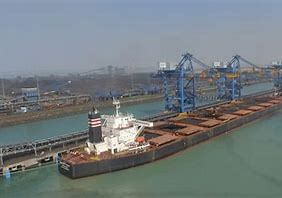
Why in News?
Adani Group's Mundra Port witnessed the arrival of the MSC Anna, the largest container ship to ever dock at an Indian port. The MSC Anna, nearly 400 meters long, made this historic visit.
About Mundra Port:
- Significance: Mundra Port stands as the largest private and container port in India, playing a critical role in the country's maritime operations.
- Location: Situated on the northern shores of the Gulf of Kutch in the Kutch district of Gujarat, Mundra Port enjoys a strategic location.
- Characteristics: Mundra Port is a deep-draft and all-weather port, allowing for the smooth operation of vessels in various conditions.
- Special Economic Zone: In addition to its port operations, Mundra Port operates as a special economic zone (SEZ), fostering economic activities in the region.
- Ownership and Traffic: Owned and managed by Adani Ports and Special Economic Zone Limited (APSEZ), Mundra Port is a key player in India's cargo movement, handling around 33% of the country's container traffic.
- Handling Capacity: With a substantial capacity of 260 million metric tons (MMT), Mundra Port efficiently manages over 155 MMT of cargo, contributing significantly to India's maritime trade.
- Infrastructure: Mundra Port boasts 26 berths and two single-point moorings, allowing for the handling of a diverse range of vessels and cargo types.
- Cargo Handling: The port deals with a wide array of cargo, including containers, dry bulk, break bulk, liquid cargo, and automobiles, showcasing its versatility and efficiency.
- Special Facilities: Featuring India's largest coal import terminal, Mundra Port facilitates rapid cargo evacuation with minimal turnaround times, enhancing operational effectiveness.
- Connectivity: Linked to the national rail network, Mundra Port's rail connectivity enables seamless cargo transport to various parts of India, ensuring efficient logistics operations.
MSC Anna
- Description: MSC Anna is the largest container ship ever to visit an Indian port, setting a new milestone in maritime operations in the country.
- Physical Attributes: MSC Anna stretches approximately 399.98 meters, equivalent to the length of four football fields, making it one of the largest container ships globally.
- Capacity: With a capacity to carry 19,200 TEUs (20-foot equivalent units), MSC Anna stands out for its immense cargo-carrying capabilities, contributing to efficient trade operations.
- Arrival Draft: MSC Anna has an arrival draft of 16.3 meters, uniquely accommodated only at Adani Ports in Mundra due to its deep-draft capabilities, setting it apart from other Indian ports.
GS-I/Geography
Kumaon Himalayas
Source: The Hindu
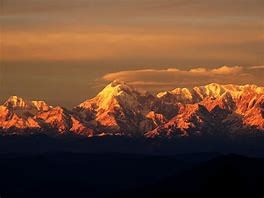
Why in News?
Recently, there was a halt by the Supreme Court on a 90-acre project in the ecologically fragile and seismic-prone lower Himalayan ranges in the Kumaon hills of Uttarakhand.
About Kumaon Himalayas
- The Kumaon Himalayas represent the west-central part of the Himalayas located in northern India.
- Geographically, this region is positioned between the Sutlej River in the west and the Kali River in the East.
- It consists of a segment of the Siwalik Range in the south and a part of the Great Himalayas in the north, predominantly situated within the state of Uttarakhand, northwest of Nepal.
- The highest peaks in this area include Nanda Devi and Kamet.
- Notable lakes in the region are Naini Lake, Sattal, Bhimtal, and Naukuchiya Tal.
- This region is renowned for housing prominent hill stations like Nainital, Ranikhet, and Almora.
- It serves as a melting pot for various tribal and indigenous communities such as Tharus, Bhutiyas, Jaunsaris, Buksas, and Rajis.
- One of the major concerns associated with the Kumaon Himalayas is its status as an ecologically fragile and seismic-prone area.
Key facts about Shiwalik Range
- The Shivalik Hills constitute a sub-Himalayan Mountain Range extending approximately 1,600 km from the Teesta River in Sikkim, traversing through Nepal and India, and reaching northern Pakistan.
- This range runs parallel to the Himalayan system from Haridwar along the Ganges to the banks of the Beas River.
- With an average elevation ranging from 900 to 1,200 meters, these hills primarily consist of low sandstone and conglomerate formations, which are essentially the solidified and up-thrown debris from the greater range behind them, with an intermediate valley lying between the outer hills and the Mussoorie range.
GS-I/Geography
Periyar River
Source: Times of India

Why in News?
A mass fish kill struck the Periyar river in Kerala recently, leaving a path of destruction and sparking outrage.
About Periyar River:
- It is the longest river in Kerala.
Course:
- Originates in the Western Ghats of Tamil Nadu.
- Flows northwards to the Periyar National Park into the man-made Periyar Lake (created in 1895).
- Water from the lake flows into Vembanad Lake and then into the Arabian Sea.
- A tunnel diverts water from Periyar Lake to the Vaigai River in Tamil Nadu for irrigation.
Significance:
- Known as the 'Lifeline of Kerala' for its significant economic contribution to the state.
Idukki Dam:
- The largest dam and hydroelectric project in Kerala.
- One of the tallest arch dams in Asia.
Other Dams:
- Various dams constructed along the river including Neriyamangalam, Pallivasal, Panniyar, Kundalam, Chenkulam, and Mullaperiyar.
Historical Significance:
- Kalady, on the banks of the Periyar, is the birthplace of Sankaracharya, a renowned Advaita philosopher.
Tributaries:
- Major tributaries include the Muthirapuzha River, Mullayar River, Cheruthoni River, Perinjankutti River, and the Edamala River.
GS-II/Polity and Governance
INTERNATIONAL COURT OF JUSTICE (ICJ)
Source: Wion
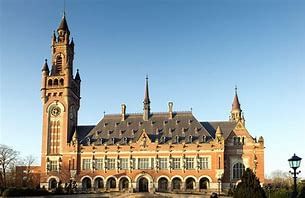
Why in News?
The International Court of Justice (ICJ) commanded Israel to stop its offensive in Rafah, Gaza, following a case filed by South Africa alleging genocide and highlighting the significant threat to the Palestinian populace.
- This ruling, the third this year, aimed to reduce casualties and alleviate humanitarian crises in Gaza. Despite being legally binding, the ICJ lacks enforcement mechanisms.
About International Court of Justice (ICJ)
- The ICJ, also known as the World Court, is the primary judicial body of the United Nations (UN), established in June 1945 under the UN Charter.
- Originating from the League of Nations' Permanent Court of International Justice (PCIJ) in 1922, the ICJ succeeded the PCIJ after World War II.
- Located in The Hague, unlike other UN principal organs in New York City, the ICJ's role involves resolving state-submitted legal disputes and providing legal advisory opinions.
- Its jurisdiction is based on mutual consent of disputing parties, and its judgments, without appeal, are binding but subject to interpretation or revision.
- Despite lacking enforcement powers, the ICJ's authority relies on states' voluntary compliance with its decisions.
Seat and Role
- The ICJ, situated in the Peace Palace in The Hague, represents various legal systems globally and operates in English and French as official languages.
- While all UN members are ICJ statute parties, the court's jurisdiction requires mutual consent of involved parties.
- ICJ judgments are final and binding, with no appeal process but potential for interpretation or revision based on new facts.
Judges of the Court
- The ICJ comprises 15 judges elected for nine-year terms by the UN General Assembly and Security Council through simultaneous but separate voting.
- Candidates must secure majorities in both bodies for election, sometimes requiring multiple voting rounds, with one-third of the court elected every three years.
- The court's president and vice-president, serving three-year terms, are elected by secret ballot, with judges eligible for reelection.
- India has seen four of its nationals serve as ICJ judges, including Justice Dalveer Bhandari since 2012.
India at the ICJ
- India has been involved in six ICJ cases, with four concerning Pakistan, such as disputes over territorial rights, prisoners of war, and nuclear disarmament negotiations.
- This includes cases like the (Kulbhushan) Jadhav case in 2019, emphasizing the varied legal challenges India has navigated at the ICJ.
GS-II/Polity and Governance
CALCUTTA HC CANCELS OBC CERTIFICATES FOR 77 GROUPS
Source: Hindustan Times

Why in News?
The Calcutta High Court invalidated several orders issued by the West Bengal government between March 2010 and May 2012, granting reservation under the Other Backward Classes (OBC) category to 77 communities, predominantly comprising 75 Muslim groups.
Background:
- A division Bench of the Calcutta High Court found that the West Bengal Backward Classes Commission and the state government had solely considered religion as the basis for providing reservations, which goes against constitutional provisions and court directives.
Key Takeaways from Judgment:
- The High Court relied on the Supreme Court's landmark ruling in the Indra Sawhney v Union of India case (Mandal judgment), emphasizing that OBCs cannot be granted reservation solely based on religion.
- The Commission and government had hastily identified the 77 classes without objective criteria following a public announcement by the then Chief Minister regarding a quota for Muslims in 2010.
- The Court criticized the lack of impartiality in the identification process, suggesting that these communities were being exploited for political gains.
Sub-classification of OBCs:
- The Court nullified sections of West Bengal's 2012 Act that permitted the sub-classification of OBC reservations into OBC-A and OBC-B categories without consulting the Commission.
- It mandated that the state government consult the Commission for a fair classification process, including sub-classification, based on collected data to address varying levels of deprivation among different communities.
GS-II/Polity and Governance
PM-KUSUM (Pradhan Mantri Kisan Urja Suraksha evam Utthaan Mahabhiyan) Scheme
Source: The Hindu

Why in News?
The Ministry of Renewable Energy recently cautioned farmers about counterfeit websites and mobile apps on the PM-KUSUM website. These fake platforms offer bogus online forms and demand registration fees for installing solar water pumps under the PM Kusum scheme.
About PM-KUSUM Scheme
- The initiative was introduced in 2019 to reduce diesel dependency in agriculture and boost farmers' earnings.
- Its primary objective is to ensure energy security for Indian farmers and fulfill India's commitment to raise the share of non-fossil-fuel sources in electric power generation to 40% by 2030 under INDCs.
- The scheme aims to incorporate 34,800 MW of solar capacity by March 2026, supported by a total central financial allocation of Rs 34,422 crore.
- Nodal Ministry: Ministry of New and Renewable Energy (MNRE), with implementation overseen by state government departments.
- Under the scheme, the central government provides subsidies of up to 30% or 50% of the total cost for the installation of standalone solar pumps and for solarizing existing grid-connected agricultural pumps.
- Farmers also have the opportunity to set up grid-connected solar power plants up to 2MW on their unused land, with the government offering support.
Components of the Scheme
Component A:
Involves installing 10,000 MW of solar capacity through small Solar Power Plants within a five-kilometre radius of specified substations to minimize transmission costs.
Component B:
Includes setting up 20 lakh standalone Solar Powered Agriculture Pumps to replace diesel pumps in off-grid areas, with a minimum 30% subsidy from the state government.
Component C:
Focuses on solarizing 15 lakh Grid Connected Agriculture Pumps, enabling farmers to use solar power for irrigation and sell excess power to DISCOMs.
Eligible Categories under KUSUM Scheme
- An individual farmer
- A group of farmers
- FPO or Farmer producer organization
- Panchayat
- Co-operatives
- Water User Associations
GS-II/Polity and Governance
Nyishi Tribe
Source: Times of India
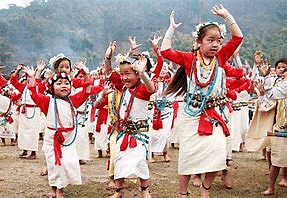
Why in News?
Mountaineer and cricketer Kabak Yano recently made history by becoming the fifth woman from Arunachal Pradesh and the first woman from the Nyishi tribe to conquer Mt. Everest.
About Nyishi Tribe:
- The Nyishi people constitute the largest ethnic group in Arunachal Pradesh.
- In their traditional language Nishi, 'Nyi' signifies "a man" and 'shi' denotes "a being", together representing a civilized human being.
- The Nyishi language, belonging to the Sino-Tibetan family, has a disputed origin.
Geographical Distribution:
- The Nyishi primarily inhabit eight districts in Arunachal Pradesh and also reside in Sonitpur and North Lakhimpur district of Assam.
- With a population of about 300,000, they are the most populous tribe in Arunachal Pradesh, sustaining themselves through agriculture, hunting, and fishing.
- Besides agriculture, the Nyishis excel in various handicrafts like weaving, cane and bamboo works, pottery, blacksmithing, wood carving, and carpentry.
Religion:
- According to the 2011 Census, Nyishi people follow Christianity (31%), Hinduism (29%), and a significant number still adhere to the indigenous Donyi Polo faith.
- Donyi Polo, representing the Sun and the Moon, are revered as Ayu Donyi (Great Mother Sun) and Atu Polu (Great Father Moon).
Festivals:
- The Nyishi community celebrates three major festivals - Boori-Boot (February), Nyokum (February), and Longte (April) - to seek blessings for a bountiful harvest and well-being.
Social Structure:
- Polygyny is prevalent among the Nyishi, who trace their lineage patrilineally and are divided into various clans.
- Unlike a caste-based or class-stratified society, Nyishi society exhibits loose social distinctions not dictated by birth or occupation.
- Women hold a significant status in Nyishi culture, viewed as the source of peace, progress, and prosperity. They are integral to the society through a system of reciprocal marital exchange.
GS-III/Environment and Ecology
Stellaria mcclintockiae
Source: The Hindu
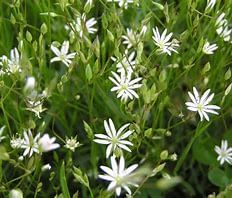
Why in News?
Recently, a new plant species found on the high, muddy slopes of the Nelliyampathy hills in Kerala's Palakkad district has been named as Stellaria mcclintockiae.
About Stellaria mcclintockiae:
- It is a newly discovered plant species belonging to the genus Stellaria (family Caryophyllaceae).
- This annual herb grows up to 15 cm in height.
- Known to be found only in the Nelliyampathy hills, specifically at an elevation of 1,250-1,400 meters.
- Distinguishes itself from other species of the same genus through unique features of its petals, pollen morphology, bracts, sepals, and seed architecture.
- First species of the genus Stellaria reported from south India.
- The researchers have recommended classifying Stellaria mcclintockiae as critically endangered according to the International Union for Conservation of Nature (IUCN) criteria.
GS-III/Environment and Ecology
NAMAMI GANGA
Source: The Wire

Why in News?
Despite the infusion of nearly Rs 40,000 crore into the prominent Namami Gange initiative since 2014, various issues persist, such as malfunctioning sewage treatment facilities and poor governance.
Background:
- The Ganga, India's lengthiest river and a lifeline supporting roughly 400 million individuals as per one estimation, has been a focal point of cleanliness campaigns since the mid-1980s. This is due to the influx of sewage and industrial effluents into the river.
About Namami Ganga:
- The Namami Gange Programme is an Integrated Conservation Mission sanctioned as a 'Flagship Programme' by the Union Government in June 2014, with a budget allocation of Rs. 20,000 Crore. Its primary goals include effectively reducing pollution levels and conserving and reviving the National River Ganga.
- The union government initiated the Namami Gange programme in 2014 under the National Mission for Clean Ganga (NMCG) housed within the Ministry of Jal Shakti's Department of Water Resources, River Development, and Ganga Rejuvenation.
- The key components of the Namami Gange Programme comprise:
- Sewerage Treatment Infrastructure
- River-Front Development
- River-Surface Cleaning
- Bio-Diversity
- Afforestation
- Public Awareness
- Industrial Effluent Monitoring
- Ganga Gram
- The program is structured into Entry-Level Activities (for immediate visible impact), Medium-Term Activities (to be completed within a 5-year timeframe), and Long-Term Activities (to be accomplished within 10 years).
Shortcomings:
- Sewage Treatment Plants (STPs) are not operating at their intended capacities.
- The issue of reduced water flow in the river remains inadequately addressed.
- Projects like the Ken-Betwa river linking project could harm the Ganga's flow by diminishing water flow, as both the Ken and Betwa rivers converge with the Yamuna near the UP-Madhya Pradesh border, which subsequently merges with the Ganga at Prayagraj in Uttar Pradesh.
- Concerns also arise from river tourism endeavors such as the construction of luxury tent cities in Ayodhya on the river's floodplains.
- Experts have highlighted that the emphasis on cleansing the main stem of the river has shifted focus away from the conditions of the smaller tributaries and streams that feed into the Ganga as it traverses the Gangetic river basin spanning Uttarakhand, Uttar Pradesh, Bihar, and West Bengal.
GS-III/Economy
Industrial Safety
Source: Times of India

Why in News?
The recent chemical factory blaze in Thane resulted in 11 fatalities and over 60 injuries due to the use of reactive chemicals.
Background:
- Frequent industrial accidents highlight regulatory and knowledge gaps.
Key Takeaways
- India has seen a rise in fire and explosion incidents in industrial and commercial settings.
- India ranks among the top chemical manufacturing nations globally, with industries like pharmaceuticals, pesticides, fertilizers, paints, and petrochemicals contributing significantly.
- The chemical sector in India, responsible for 11% of exports and employing over two million people, lacks exclusive regulatory frameworks, leading to oversight.
- Despite multiple Acts and rules governing the industry, coordination issues among ministries hamper effective regulation.
- Over the last decade, India reported 130 chemical accidents, resulting in 250+ fatalities, emphasizing the urgent need for improved safety measures.
- Past tragedies like Bhopal Gas Tragedy and subsequent incidents underline the persistent knowledge gaps in industrial safety.
Changes in Regulatory Environment
- Recent regulatory changes aimed at improving ease of doing business may have aggravated the surge in accidents.
- Dilution of industrial safety laws like The Boilers Act, 1923, and Indian Boilers Regulation 1950 has shifted safety responsibilities from inspectors to third-party agents.
- Under the revised regulations, compliance under the Factories Act, 1948 now relies on self-certification by owners, diminishing government oversight and worker protection.
- The role of factory inspectors has transformed from enforcing labor laws to facilitating business operations, potentially compromising worker safety.
GS-IV/Ethics and Integrity
Media Trial and Ethics
Source: Economic Times

Why in News?
Media trial poses serious consequences in India.
Origin of the Term "Media Trial"
- The term "Media Trial" originated in the United States during the 19th Century and gained prominence in India through the infamous case of "K.M Nanavati v. State of Maharashtra".
- It is not a legally defined term but refers to the media publishing their interpretations of facts in various platforms such as newspapers and news channels to sensationalize cases.
Definition and Process of Media Trial
- Media trial involves the media presenting their own versions of facts in an attempt to sensationalize cases, often overlapping with the judicial process.
- At times, irresponsible media briefings by law enforcement officials contribute to this phenomenon, such as releasing statements made by the accused to the media.
Ethical Concerns Related to Media Trial
- Media trial contradicts the principle of "innocent until proven guilty," as every accused individual should be presumed innocent until proven otherwise by law.
- It can lead to contempt of court and influence judicial perception of the accused or victim in sub-judice cases.
- Media trials jeopardize the right to privacy by exposing personal details of individuals, potentially damaging their public image.
- Furthermore, such practices violate key principles of media ethics like truth, accountability, and responsible journalism.
Challenges in Regulating Media Trials
- In India, organizations like the News Broadcasting and Digital Standards Authority and the Broadcasting Content Complaints Council aim to self-regulate the media, but lack statutory support.
- The freedom of expression granted to the media under Article 19 of the Constitution can be misused during media trials, posing challenges for regulatory bodies.
- The emergence of social media as a platform for media trials complicates regulation efforts, with the spread of sensationalized or false information affecting public opinion.
Proposed Solutions
- During sensitive cases, media outlets can postpone reporting on specific aspects until after the trial concludes.
- Regulatory bodies like the NBSA should develop comprehensive guidelines, especially for cases involving national security issues.
- Media channels should verify the authenticity of information before dissemination and avoid biased reporting that favors or defames individuals or parties.
- The Press Council of India should promote the adherence to the Code of Journalistic Conduct to ensure responsible journalism.
- Implementing recommendations such as prohibiting the dissemination of harmful material related to the accused from the time of detention and empowering High Courts to delay publishing in criminal cases can help address the issue.
|
55 videos|5389 docs|1141 tests
|
FAQs on UPSC Daily Current Affairs- 27th May 2024 - Current Affairs & Hindu Analysis: Daily, Weekly & Monthly
| 1. What is the significance of Mundra Port in India? |  |
| 2. What is the PM-KUSUM Scheme and how does it benefit farmers in India? |  |
| 3. How is the International Court of Justice (ICJ) different from other international courts? |  |
| 4. What is the significance of the Nyishi Tribe in India and where are they predominantly located? |  |
| 5. What is the objective of the NAMAMI GANGA project and how is it contributing to the conservation of the Ganga River in India? |  |
















